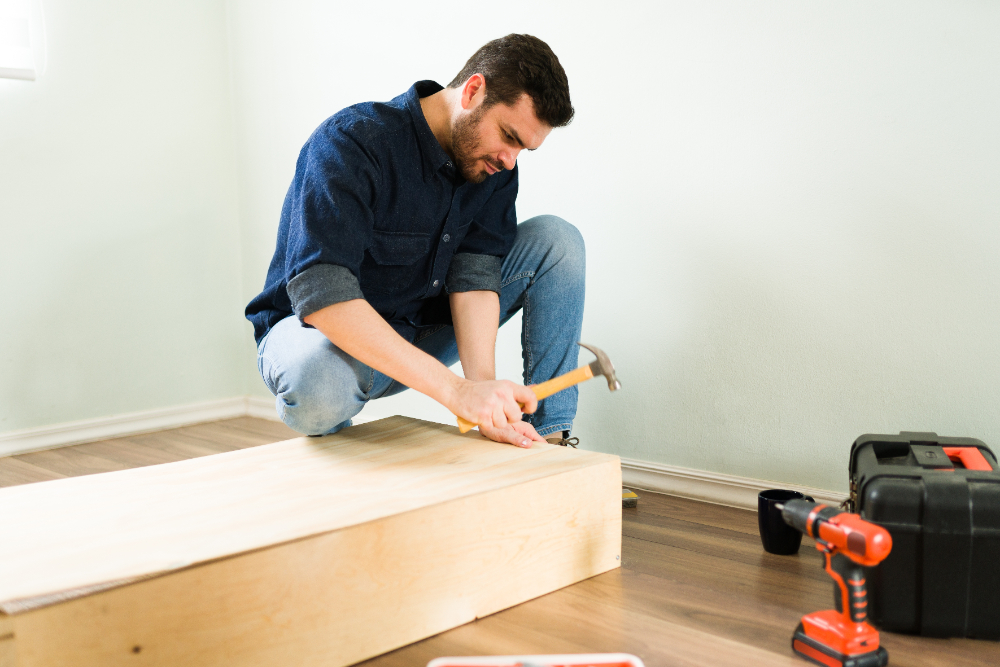How to Repair Water Damage on a Wood bottom

Introduction
Water damage on a wood bottom can be a homeowner’s agony. Whether caused by leaks, flooding, or inordinate humidity, water can beget screwing, abrasion, and structural issues. The longer the water sits, the worse the damage becomes. Restoring a wood bottom requires careful assessment, drying, and form ways to bring it back to its original condition. This companion will explore the way necessary to repair water- damaged wood bottoms and help unborn issues.
Assessing the Damage The first step in repairing a water- damaged wood bottom is assessing the extent of the damage. Different types of damage include screwing, buckling, cupping, and earth growth. Cupping occurs when the edges of the floorboards rise advanced than the center due to inordinate humidity. Buckling is a more severe condition where the wood detaches from the sub floor.However, it must be addressed before pacing with repairs, If earth growth is present.
Drying the bottom Once the damage has been assessed, the coming step is to dry the bottom completely. Removing standing water with a mop or wet vacuum is essential. adding ventilation by opening windows and using suckers helps speed up the drying process. Dehumidifiers can also prop in humidity removal.However, professional drying outfit may be necessary, If the water damage is severe. The drying process should take several days to insure the wood is fully dry before pacing to repairs.
Whether it’s exotic hardwoods, parquet patterns, or custom finishes, luxury wood flooring transforms any space into a masterpiece of style and refinement.
Repairing Cupping and Warping
If the wood bottom has cupped due to water exposure, allowing it to dry naturally may resolve the issue. Sanding can be used to smooth out minor cupping once the bottom is fully dry. For severe screwing, replacing individual boards may be necessary.However, securing them back in place with nails or glue can help stabilize the flooring, If the boards have lifted from the sub floor.
Replacing Damaged Floorboards
In cases where the water damage is too expansive, replacing sections of the wood bottom may be the stylish option. Damaged boards should be removed precisely using a pry bar. The sub floor should be audited for humidity or earth before installing new boards. Matching the new wood with the being bottom in terms of type, color, and finish ensures a flawless form. formerly installed, grinding and refinishing help blend the new boards with the old bones
Note: Finding wood floor repair near me ensures that damaged or worn-out floors receive professional treatment, .
Sanding and Refinishing After repairs
grinding the entire bottom ensures a smooth and indeed face. A barrel sander or orbital sander can be used to remove the top sub caste of wood and any remaining water stains. Once filed, the bottom should be gutted completely before applying a wood stain or sealant. Refinishing the bottom with polyurethane or another defensive coating helps restore its original appearance and protects against unborn water damage. Addressing earth and Mildew earth and mildew growth is a common issue with water- damaged wood floors.However, a admixture of water and white ginger or a technical earth way can be used to clean the affected area, If earth is present. Defensive gloves and a mask should be worn during this process.However, professional remediation may be necessary, If earth has spread considerably. icing proper ventilation and maintaining moisture situations in the home can help help earth growth in the future.
precluding unborn
Water Damage Precautionary measures can help cover wood bottoms from unborn water damage. Regular conservation, similar as checking for leaks and instantly drying tumbles, is essential. Using area hairpieces in high- threat areas and installing a vapor hedge beneath the flooring can help reduce humidity exposure. duly sealing and finishing wood bottoms with a water- resistant coating adds an redundant sub caste of protection. When to Call a Professional While minor water damage can frequently be addressed with DIY repairs, severe cases may bear professional intervention.However, if there’s expansive earth growth, or if the bottom has buckled beyond form, If the damage extends to the sub floor. Professionals have specialized outfit and moxie to restore the bottom efficiently and safely.
Conclusion
Repairing water damage on a wood bottom requires a methodical approach that includes assessment, drying, form, and refinishing. relating the type and extent of damage is pivotal in determining the stylish course of action. Whether drying the bottom, replacing damaged boards, or refinishing the face, taking the necessary way instantly can restore the bottom’s integrity and beauty. Precautionary measures similar as regular conservation and proper sealing can help cover wood bottoms from unborn water- related issues. By following these guidelines, homeowners can effectively repair and maintain their wood bottoms for times to come.